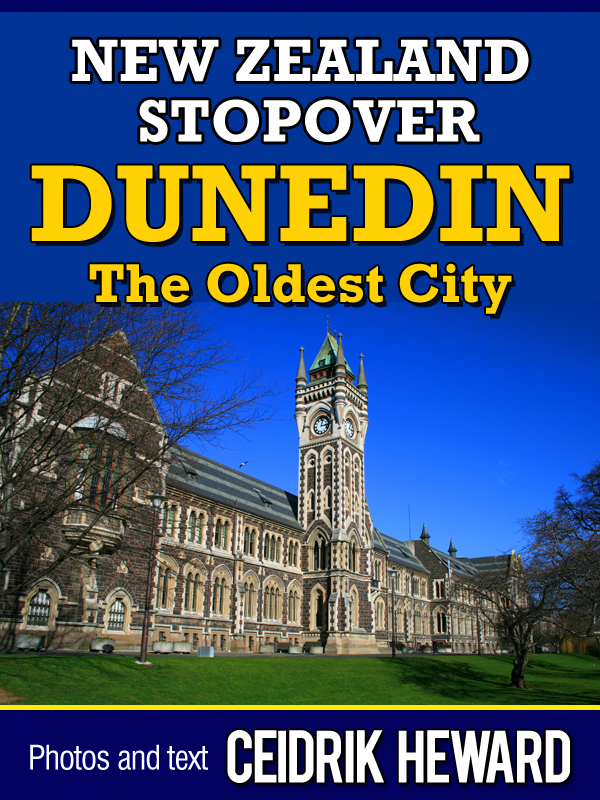On the 24th February 1912, only a few weeks before the Titanic hit an iceberg and sank, a far more modest steamer was launched on the other side of the world. 109 years later, the TSS Earnslaw still plies the water on Otago’s Lake Wakatipu and has become a New Zealand icon and is one of the oldest coal fired steamers still in operation anywhere in the world.
EARLY BOATS ON LAKE WAKATIPU
In 1860, one of Queenstown’s early European inhabitants, sheep farmer William Rees, needed a way to ship his wool out of the area so he purchased a whaleboat and launched it on Lake Wakatipu. Called the Undine, it was the first vessel to regularly sail on the lake. The whaleboat was hauled by bullock sledge from Bluff to Kingston, a gruelling trip of 167km (103miles). On arrival the bullocks were put on board and taken to his sheep farm at Queenstown Bay. Once gold was discovered in the Shotover River in 1862, the Undine was used heavily to transport people and supplies. This boat had the honour of carrying the first consignment of gold, some 25,000 ounces, out of the Wakatipu gold diggings. At today’s gold prices that one shipment was worth more than 55 million New Zealand dollars!
The 1860s gold rush brought thousands of miners and merchants into the region so more boats were in demand. Two private firms were established to build and run steamers on the lake with other companies setting up business later on. In addition to many sailing craft, a number of steamers were brought to Lake Wakatipu, mostly from Dunedin. Steamers sailing on the lake during the 1860s included the Expert, Victoria, Wakatip, Moa and the Nugget. The Nugget, later renamed the Alexandra, was cut in half and shipped from Melbourne in 1862 and transported by bullock wagon to Kingston then assembled and launched within three days. Wood was the main fuel for the paddle steamers as well as for domestic and commercial heating. Ships were kept busy carrying firewood to Queenstown, and that explains why there are no large trees around the Kingston area today. Virtually any price could be charged for passenger and freight fares. Passengers on the Moa were charged £3 per head from Kingston to Queenstown, quite a hefty price for the short voyage.
LEGENDARY LAKE STEAMERS
When looking at the history of steamships on Lake Wakatipu, four stand out for the length of service around the lake, Antrim, Ben Lomond, Mountaineer and Earnslaw. The first of the ‘famous four’ was the wooden paddle steamer Antrim. The 56 ton ship was built at Greenstone on the western shores of Lake Wakatipu from local timber. Launched on October 28th 1868, the modest steamer made her first trip under steam on 1st January 1869. Initially a wood-burner, it was converted to coal-fired boilers in 1885. Despite the Antrim’s tall funnel, passengers often complained about the hot sparks that tended to cascade onto them in certain weather conditions especially when sailing at her top speed of 8 knots. Like the ships to follow, the Antrim provided a crucial service to those living at the various farms that had been established around the shores of the large lake. The Antrim was taken out of service in 1905 and dismantled in 1920. Her boiler remains in use to haul the Earnslaw up a slipway for bi-annual servicing.
BEN LOMOND
Initially called Jane Williams, the Ben Lomond replaced the Antrim. It was launched at Queenstown in 1872 and immediately established regular daily services up and down the lake. The Ben Lomond carried 131 passengers and had a cargo capacity of 25 tons. It was privately owned and operated until 17th of April 1903 when it was purchased by the government for 3,350 pounds and operated by the New Zealand Railways. NZR extended the length of the superstructure and enclosed it to provide more comfort for passengers. The ship’s top speed was just 1.5 knots faster than the Antrim but overall, the Ben Lomond was quite an improvement on her predecessor. In 1951, at 80 years of age, and, at the time, the oldest steamer on Lloyd’s register, the ship was withdrawn from service. Although affectionately known as ‘the Ben’ there were growing complaints about the comfort onboard and it was obvious that the ship had not kept up with the times. She was stripped of all her fittings and sunk in Kingston Bay in 1952. There have been plans from time to time to raise the wreck and either display it as a relic of Queenstown’s history or to refurbish it for service but all attempts have been abandoned for various reasons.
MOUNTAINEER
The steel hulled paddle steamer Mountaineer was a vast improvement on any lake steamer that had gone before. Built in Dunedin and transported by rail in sections to Kingston, it was assembled and launched on 11th of February 1879. It could carry 200 passengers and 30 tons of freight. This increased capacity was by now required because the railway line from Invercargill to Kingston was completed in 1878 and resulted in an upsurge in tourists wanting to experience Queenstown and the attractions that even then were on offer.
By 1899 there was growing dissatisfaction with the excessive charges made by the Lake Wakatipu Steam Shipping Company which held the monopoly for lake transport. At this time, the government wanted to increase the patronage on the Kingston railway line, particularly during the summer months, but the high shipping charges made travel to the lake too expensive for many. To overcome this issue, the government purchased the Lake Wakatipu Steam Shipping Company and took possession of its ships on 3 November 1902. The Mountaineer plied the waters of Lake Wakatipu until it was sold in 1932 to the owners of Walter Peak Station where it was used as a houseboat. The old ship was finally scrapped in 1941.
TSS EARNSLAW ARRIVES
In August 1909 the government announced that a new ship would be built for Lake Wakatipu. It was to be a twin-screw coal-fired steamer of 330 tons designed to carry over 1,000 passengers. New Zealand Railways awarded a £20,850-pound contract to Dunedin shipbuilders John McGregor and Company to build the vessel at their Otago foundry and engineering works. The keel was laid on 4th of July 1911. The ship was named after Mount Earnslaw, a 2889-metre (9478ft) peak at the head of Lake Wakatipu. At 51.2 metres long, (167ft) the new lake steamer would be by far the biggest vessel on the lake, and the largest steamship ever built in New Zealand. When construction was finally completed, the Earnslaw was dismantled. All the quarter-inch steel hull plates were numbered for re-assembly much like a jig-saw puzzle. Then the parts were loaded on to a series of goods trains and transported from Dunedin to Kingston at the southern end of Lake Wakatipu, a distance of 268km (167miles).
At the time of launching the Ben Lomond was used to tow the new steamer to the Kingston wharf for fitting out. The partnership of the Ben Lomond and the Earnslaw that started on this occasion lasted 40 years until the Ben Lomond was scuttled near Kingston in 1952.
‘LADY OF THE LAKE’ SAILS
The inaugural sailing of the stately new steamer took place on Friday 18th October 1912. At Lumsden, a special train from Dunedin joined up with an even larger train from Invercargill and travelled to Kingston where the Earnslaw’s boilers weresteamed up and ready to go. With flags fluttering the shippulled away from the wharf bound for Queenstown to the accompaniment of the Invercargill Highland Pipe Band. There were many dignitaries on board and it was a quick trip to Queenstown where a large crowd waited to welcome their new steamer. They were impressed with the size and appearance of the ship and celebrations continued well into that night.
The next day was a public holiday in Queenstown allowing lucky ticket holders to travel on the Earnslaw’s all-day trip to the head of the lake at Glenorchy where a buffet lunch was held on board. For part of the return journey, the steamerwas put to full speed and reached Queenstown in one hour and fifty minutes, over one hour faster than previous ferries.
With the inaugural sailings being very successful, New Zealand Railways accepted the Earnslaw and it entered regular services on the lake. It served the lake side sheep stations for decades, carrying livestock, bales of wool, farm workers, and vehicles, along with a growing number of tourists who wanted to experience the unique daily workings of this grand old lake steamer.
In 1962, a 46km (28miles) road from Queenstown around the lake to Glenorchy was opened for traffic so all farm produce could finally be transported on trucks. The Earnslaw suddenly became surplus to requirements and in 1968 the ageing shipwas very nearly scrapped.

Fortunately, local travel company, Fiordland Travel (now called Real Journeys) leased the ship from NZR as they saw its potential as a tourist attraction. It proved a great decision and in 1982, the company purchased the Earnslaw and to this day continue to successfully run the iconic ‘Lady of the Lake’ between Queenstown and Walter Peak Station.
PERSONAL MEMORIES
As very young children, my sister and I spent our school holidays with our grandmother in Queenstown. I can still remember spending a number of long days on the Earnslaw’s head-of-the-lake voyages. (It was a way to get us out of the way for a day I guess) On each trip, we were accompanied by nervous sheep who were penned on the open deck. Being essentially a water borne courier, the vessel stopped at a number of lakeside stations to drop off and collect livestock and other farm produce. It was a long day and it was a cold trip home as in those days, the ship had only canvas awnings around the main deck that did little to stop the chilling wind. We did a few of these trips over the years and on some of them, the pair of us were the only human passengers. Looking back on the experience, we were not well treated by the crew who left us to fend for ourselves against the cold weather. We would huddle at the base of the funnel to try and stay warm. Today, permanent windows weather proof the main deck making it far more comfortable for those travelling on the Edwardian era steamer.
I am surprised the history of the Lake Wakatipu steamers is not a better-known part of the Queenstown story. Maybe with a growing interest in New Zealand’s colonial history, this issue can be addressed and this fascinating chapter in the country’s pioneering history is made available to those who flock to the alpine resort to experience its awesome scenery and attractions. After all, the TSS Earnslaw is a treasured attraction and the only fully operational coal powered vessel in the southern hemisphere.
Ceidrik Heward
Ceidrik Heward is an Amazon TOP SELLING AUTHOR and has lived and worked in 7 countries working as a TV cameraman, director and film tutor. For the past 17 years he has focused on writing and has been published in magazines and newspapers in Europe, USA, Asia and the Middle East.
His interests include photography, psychology and metaphysics. He loves to read and always has at least 3 books on the go. He has written 22 manuals/books and has just completed his 4th short novel. Ceidrik believes sharing information and stories is the best way to stimulate the imagination and enrich our lives.


















 Visit Today : 211
Visit Today : 211 Total Visit : 1133388
Total Visit : 1133388
I have an old NZR swivel chair from the saloon of the Ben Lomond as well as an NZR officers bullion badge from either the Ben Lomond or the Earnslaw (I’m not sure which) Interesting old relics from a bygone age.
What wonderful mementos to have Bruce. I remember those (uncomfortable) swivel chairs on the Earnslaw. I guess the ones on the Ben Lomond were similar.